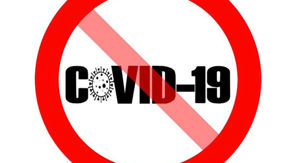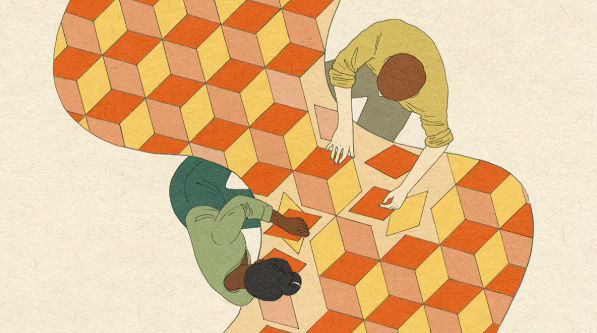We’re living through an era of accelerated change, and leaders feel it every day. In five years, we’ve experienced the impacts of Covid and how it rebooted the norms we took for granted in how we work; the advent of gen AI and the reckoning with its massive impact on business as usual; and high geopolitical instability and its paralyzing effects on business decisions.
At the core of these disruptions is ambiguity: situations where the available information is incomplete, contradictory, or constantly shifting, and clear answers are impossible. We didn’t know what work would look like once offices reopened. We don’t know which jobs AI will automate. We don’t know which countries we’ll be able to trade with tomorrow without prohibitive tariffs.
Why does this matter? Because ambiguous times call for a different kind of leadership than stable times. Navigating ambiguity requires a new skillset—one that leans into our humanity rather than bypasses it. Unlike machines, we bring a biological response to change. And that response, if understood and harnessed, can become a powerful advantage.
Drawing on our collective decades of working with leaders, as well as research at the intersection of design thinking and human physiology, we’ve identified three biological realities that shape how people navigate ongoing change and ambiguity. Each comes with practical strategies you can use to take back control.
Turn Problems into Opportunities
Biological reality
Humans naturally seek to reduce ambiguity. In ambiguous situations, the body’s first response typically isn’t creativity or problem-solving—it’s survival. When we encounter something new or uncertain, our nervous system activates the stress response, often described as fight, flight, or freeze. The brain detects potential threats, triggers the amygdala, and releases cortisol and adrenaline. These chemicals sharpen focus and prepare the body to react quickly, but they also narrow attention and suppress higher-order thinking. That’s why, in moments of disruption—like a reorganization or sudden shift in market conditions—leaders can find themselves feeling defensive, anxious, or paralyzed rather than open and innovative.
Beyond biology, our corporate culture can keep us in that state. Shareholders don’t want to hear that we don’t know what’s next. Employees want answers. They—and the market—demand confidence and certainty, even when conditions are murky.
Design response
Where biology pushes us toward threat, designers are trained to see change as possibility. At IDEO, where Amy spent nearly a decade, the first step in tackling any client problem was to reframe it as a “design challenge.”
Instead of focusing on deficits—e.g., “voter participation is down” or “farm equipment sales are low”—we would pose an optimistic question: “How might we create a fun and accessible voting experience?” or “How might we help farmers grow their businesses?” That simple perspective-shift in language unlocked energy and creativity. Once the challenge was framed as an opportunity and human need, ideas flowed naturally, and fun and momentum followed.
Research shows that with practice, leaders can shift from a “threat state,” where stress feels overwhelming, to a “challenge state,” where the same physiological arousal becomes energizing and motivating. Strategies such as developing a “stress mindset” (focusing on the enhancing side of stress), cognitive reappraisal (reframing the experience toward what’s good), and even deliberate pauses give the cortex—the brain’s decision-making and idea-generating center—time to re-engage.
First, you must thwart that initial threat reaction by creating space to respond instead of reacting. This can involve simply taking a moment to breathe, which can calm a threat response, to creating time and space to rethink the challenge ahead. For example, when Amy worked with one of the last print-based Yellow Pages, which needed to quickly move to digital, leaders asked: How might we serve our customers better now than before? And how do we upskill our teams for the digital era at the same time? The result of this reframe (and the subsequent changes it allowed) was that employees began acting like owners while new product processes delivered results and customer growth.
How to help yourself reframe
Take an area of uncertainty and use these prompts to see it differently. For example:
- What has this uncertainty created more space for?
- What are the unmet customer or employee needs we might now be able to address?
Create Space for Inspiration
Biological reality
Creativity suffers under stress and cognitive load. When your brain is overwhelmed, the prefrontal cortex—the part responsible for planning, ideation, and innovation—gets hijacked by the limbic system, your emotional and survival center. That means fewer new ideas, reduced insight, and more reactive behavior.
Design response
Ambiguity isn’t a bug; it’s a feature of life. It’s in times of ambiguity that you can make the biggest, boldest moves—where breakthrough thinking can be born. The trick? You have to get comfortable staying in the space of ambiguity. One way to do it is to get excited about its possibility.
Designers savor ambiguity by beginning with inspiration, not ideation. The beauty of pausing for inspiration is that it shakes you up, takes your mind off the uncertainty, and helps you engage with a fresh perspective. It activates that creative part of your brain.
At IDEO, we never jumped straight into problem-solving. Instead, we began by intentionally seeking inspiration—through field research, observation, or what we called analogous experiences: stepping outside the problem domain to find surprising parallels and emotional truths elsewhere. Analogous inspiration breaks your mental model.
Take this example: When working with Old Navy on reinventing their plus-size offering, Amy and her team didn’t start with store layout or marketing campaigns. They first went to karaoke bars. Why? Because the team realized that for many women wearing size 16+, the experience of shopping in segregated “plus sections” felt like being put on stage—seen, judged, exposed. Karaoke became an analogy for that emotional state. That unexpected parallel led the team to shift from a design of separateness to integration on the shop floor and in brand storytelling.
How to help yourself gather insight
Take an area of ambiguity and turn it into a scavenger hunt. For example:
- Just wrapped up a company reorg? Help your team refocus by encouraging them to take five new colleagues out for coffee and asking them to share a story they think best highlights the culture of the company.
- Unsure how to encourage incorporating AI into processes? Instead of jumping straight to solutions, tee up an inspiration month. Encourage employees to share stories of other companies using AI both successfully and unsuccessfully.
Experiment Your Way Forward
Biological reality
Steps that are too big can paralyze us. When the stakes feel high or the path unclear, the nervous system may enter a heightened state of alert. That triggers the sympathetic nervous system (fight or flight), which can disrupt the brain’s connectivity—cutting off access to the cortex and increasing emotional reactivity from the limbic system. The result? We procrastinate. We distract ourselves. We avoid taking action, not because we don’t care, but because the action feels too uncertain, too risky, too much. Sometimes, it’s because our body has literally “frozen,” making action impossible.
Design response
We’ve saved the best for last. This is Amy’s favorite thing to do, and one of the most powerful tools—the secret sauce—in a designer’s toolkit. Action creates clarity, not the other way around. So experimentation is how smart companies and individuals move forward when clarity is missing. Rather than waiting for the perfect answer, designers try small, intentional, low-risk experiments to learn what works. Bear in mind that experiments are not pilots. The goal is to learn, not to prove.
For example, when a bank in Australia wanted to introduce a product to help parents teach their kids smart credit card behaviors, the IDEO team created a “works-like” product out of a prepaid debit card. In a short, month-long experiment, parents were able to give their kids spending limits, track purchases, and give feedback on what such a product could offer. When the bank went to design and build the product, they were doing it based on real-world information, not guesses as to customer behavior.
In times of ambiguity, experimentation lets us bypass the paralysis of big decisions by focusing on small steps that feel safe enough to try. Importantly, experiments don’t have to succeed to be useful. They just have to teach us something new. Success isn’t “we incorporated AI into several processes” or “work is all smooth now after the reorg.” Success is “we learned something that moves our understanding forward.”
How to help yourself and your team experiment
Take an area where you or your team are stuck and not sure how to move forward, then peel back the layers to the smallest-possible step. For example:
- Trying to incorporate AI but facing trepidation or resistance? What if you made a lunch-and-learn series, where employees commit to playing with an AI tool, sharing at one session, and joining three other sessions to get inspired? Make their prompts non work–related to help it feel light and accessible.
- Facing funding cuts as a nonprofit leader? What if you hosted a “funding inspiration call” for fellow nonprofit leaders and shared your favorite revenue models from other businesses, then brainstormed new earned revenue sources? If there’s interest, you could turn that into a regular experimentation club where each organization tries different funding methods and shares learnings.
Each tiny experiment gives you data. That data gives you confidence. And that confidence reduces ambiguity—not because you’ve magically figured everything out, but because you’re moving.











